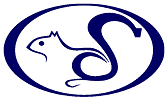|
|
If you've searched the Knowledge Base and not found your answer, you may ask
a new question of technical support.
More Instructions...
|
WebSeeker 98 v3.4 for Windows 95/98/NT
Q: I receive a lot of results I don't want with only
a few that I do. How can I get only the results I
want?
A: You will receive better search results by
selecting keywords that are unique (if possible)
to the subject you are searching. Also, you can
narrow your search by using AND. By checking the
AND radio button on the Start New Search dialog,
WebSeeker automatically removes any search
engines that do not support AND searches. Using
multiple, unique words will also ensure better
search results. To help you weed out these
unwanted results, select FilterFind from the
Start New Search dialog. You can then drill down
to the exact results you want using the Refine
filter.
Top
Q: Why do I receive results that don't contain any
keywords from the search?
A: Sometimes results appear that don't seem to have
any reference to the search. This can be due to
several reasons:
1. The web page previously contained the
referenced information, but has since been
changed.
2. The page no longer exists.
3. The server has not been updated since
modifications were made.
4. The keywords can be found in the source. You
can check this by selecting View / Source on your
Web browser.
5. To reduce the chance of this happening, use a
more advanced type of search, such as CleanFind
or FilterFind when starting a new search.
Top
Q: Why can't I see images on pages returned with
FilterFind?
A: The FilterFind option in WebSeeker downloads the
Web page to your local drive, like the File /
Save As... function of your Web browser. The
exported page file contains only raw HTML � the
information you see when you select View / Source
in your Web browser. The images are not
downloaded, which saves time during the search.
To go online and see the images, click the Browse
Remote button in the top right corner of the Web
page.
Top
Q: I want to use WebWhacker and WebSeeker together.
How can I whack pages that are a result of a
search in WebSeeker?
A: The FilterFind option in WebSeeker downloads
(whacks) the text of the Web page to your local
drive.
Top
Q: What's the difference between the three Find
options?
A: InstantFind -- is the fastest type of search. It
removes duplicate URLs or duplicate Titles (as
defined in Preferences) rom the search
results.
CleanFind -- is the next fastest type of search.
After removing duplicate URLs or Titles as above,
it goes out to each site to make sure that the
URL is still available. If it cannot find that
URL before timing out, that URL is removed from
the list.
FilterFind -- is the most robust but slowest
search option. After doing all of the above, it
downloads (whacks) the text of each URL to your
local drive. You can view the results as an
abstract, and you can view each page with the
keyword(s) highlighted. You can also repeatedly
refine results from your original search query
while your computer is off-line, enabling you
to "drill down" to the precise information you
need.
Top
Q: Why does WebSeeker download this ui.ini file
every time I start the program?
A: This is how WebSeeker checks to make sure you
have the most current version of the program. You
can turn this automatic checking off by going to
Tools / Preferences... / InstantUpdate and
choosing Manual Update Only. To manually check to
see if you have the current version of the
program, select InstantUpdate from the Tools menu.
Top
Q: How can I tell which sites are being monitored?
A: The latest version of WebSeeker uses an "eye"
icon to denote that a Web page is being monitored
for changes.
Top
|
|
 Blue Squirrel
Blue Squirrel
 Blue Squirrel
Blue Squirrel